Do you have a question about the Samsung UE32C4000PW and is the answer not in the manual?
Lists items included with the LED TV for initial setup and operation.
Identifies and explains the TV's physical control buttons and indicators.
Details the functions and layout of the TV's remote control.
Instructions for connecting the TV to a broadcast antenna (VHF/UHF).
Guides through the initial TV setup process for language, country, and channels.
Explains how to connect devices using HDMI/DVI cables.
Details connecting devices using Component, Audio/Video, or Scart cables.
Guides on connecting audio devices via optical or headphone jacks.
Information on using the CI/CI+ card slot for paid channels.
Details how to select different input sources for the TV.
Explains how to navigate the TV's on-screen menu system.
Details using the INFO button for channel and program information.
Information on using the EPG (Electronic Programme Guide) to schedule programs.
How to view and manage available TV channels.
Tools for deleting, sorting, and managing favorite channels.
How to set and manage favorite channels for quick access.
Automatically scans for and stores available TV channels.
Manually scans for and stores TV channels.
How to edit channel names and numbers.
Importing or exporting channel maps via USB storage.
Viewing, modifying, or deleting reserved TV programs.
Selects preferred picture modes like Dynamic, Standard, or Movie.
Adjusts picture quality settings like brightness, contrast, and sharpness.
Features for reducing power consumption like Energy Saving.
Selects preferred sound modes like Standard, Music, or Movie.
Adjusts equalizer settings and balance for audio output.
Features like Virtual Surround and Dialog Clarity for enhanced audio.
Sets the default audio language for digital channels.
Configures digital audio output format and handles echo issues.
Enables or disables audio description for visually impaired users.
Equalizes volume levels across channels or adjusts for night viewing.
Selects between TV speakers and external audio systems.
Settings for DTV audio level, SPDIF output, and audio delay.
Resets all sound settings to factory default values.
Sets the TV's time zone for accurate time display and timer functions.
Automatically turns off the TV after a preset period.
Schedules the TV to turn on or off at specific times.
Locks specific channels to prevent unauthorized viewing.
Locks channels to prevent unauthorized access by children.
Restricts access to programs based on ratings using a PIN code.
Allows changing the PIN code for security features.
Sets the menu and teletext display languages.
Selects preferred audio and subtitle languages for broadcasts.
Controls subtitle display, including mode and language.
Accesses the menu for CAM-provided modules and PC cards.
Views information about the inserted CAM module and CI/CI+ card.
Configures the Picture-in-Picture function, including source and size.
Checks for picture problems by displaying a test image.
Uses built-in melody to check for sound problems.
Displays HDTV channel reception quality for antenna adjustment.
Provides general troubleshooting tips for TV issues.
Instructions for updating TV software via USB or channel.
Lists supported display modes and resolutions for PC connection.
Steps to connect a USB device for media playback.
Important notes and limitations regarding USB media playback.
Navigating and viewing files within the Media Play interface.
How to select and play video files from a connected USB device.
Lists compatible video file extensions, codecs, and resolutions.
Allows resuming movie playback from the last stopped point.
How to select and play music files from a USB device.
Displays photos individually or as a slide show from USB.
Selecting and playing multiple video, music, or photo files.
Options for sorting files by category, title, date, or artist.
Options available during media playback, like repeat mode and zoom.
Configuration options for Media Play, including resume play and DivX registration.
Guides on connecting home theatre systems for Anynet+ control.
Overview of Anynet+ menu options based on connected devices.
Enabling Anynet+ (HDMI-CEC) and configuring auto turn off.
How to select and switch between different Anynet+ connected devices.
Instructions for recording TV programs using a Samsung recorder.
How to output sound through an external receiver instead of TV speakers.
Solves common problems related to Anynet+ device connectivity and function.
Addresses issues with initiating or exiting the Anynet+ function.
Resolves problems with Anynet+ devices not playing or displaying correctly.
How to navigate and view Teletext pages using numeric buttons.
Selecting topics or pages using colour-coded buttons for FASTEXT.
Switching between Teletext modes like LIST and FLOF.
Provides guidance on cable assembly for stands and wall mounts.
Instructions for managing cables neatly with the TV stand.
Guidelines for managing cables when the TV is wall-mounted.
Attaching the blanking bracket when mounting the TV to a wall.
Securing the power cord clamp to the TV for wall mounting.
Steps and considerations before installing a wall mount bracket.
How to install and use a Kensington lock for physical security.
Instructions for installing an anti-fall device to secure the TV.
Solutions for common problems related to TV image and audio output.
Addresses issues with channels, PC modes, power, and signal reception.
Covers lost settings, intermittent signal, PIP, physical issues, and licensing.
Details licensing for Dolby, DTS, and DivX technologies used in the product.
Details panel native resolution, operating conditions, and humidity.
Specifies TV system standards, colour/video systems, and HDMI inputs.
Provides model name, screen size, sound output, dimensions, and weight.
Warnings and precautions for electrical safety and preventing fire hazards.
Guidelines for ensuring proper ventilation and safe placement of the TV.
| Display diagonal | 32 \ |
|---|---|
| Display resolution | 1366 x 768 pixels |
| Native aspect ratio | 16:9 |
| Native refresh rate | 60 Hz |
| Visible diagonal screen size | 80 cm |
| Product color | Black |
| Panel mounting interface | 200 x 200 mm |
| Audio system | Dolby Digital |
| RMS rated power | 20 W |
| Number of speakers | 2 |
| HDMI ports quantity | 4 |
| USB 2.0 ports quantity | 1 |
| Ethernet LAN (RJ-45) ports | 0 |
| 3D | No |
| Power requirements | 220-240V, 50/60Hz |
| Package weight | 11300 g |
| Depth (with stand) | 255 mm |
|---|---|
| Height (with stand) | 549.1 mm |
| Weight (with stand) | 9200 g |
| Depth (without stand) | 29.9 mm |
| Width (without stand) | 774.6 mm |
| Height (without stand) | 491.8 mm |
| Weight (without stand) | 8400 g |

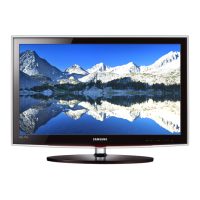

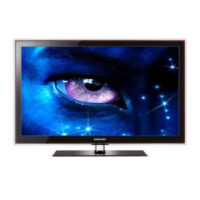
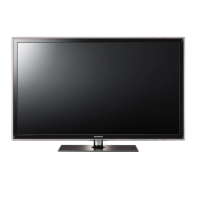


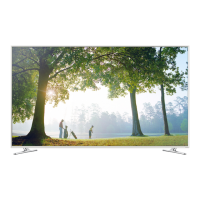



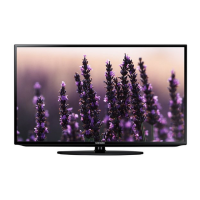
